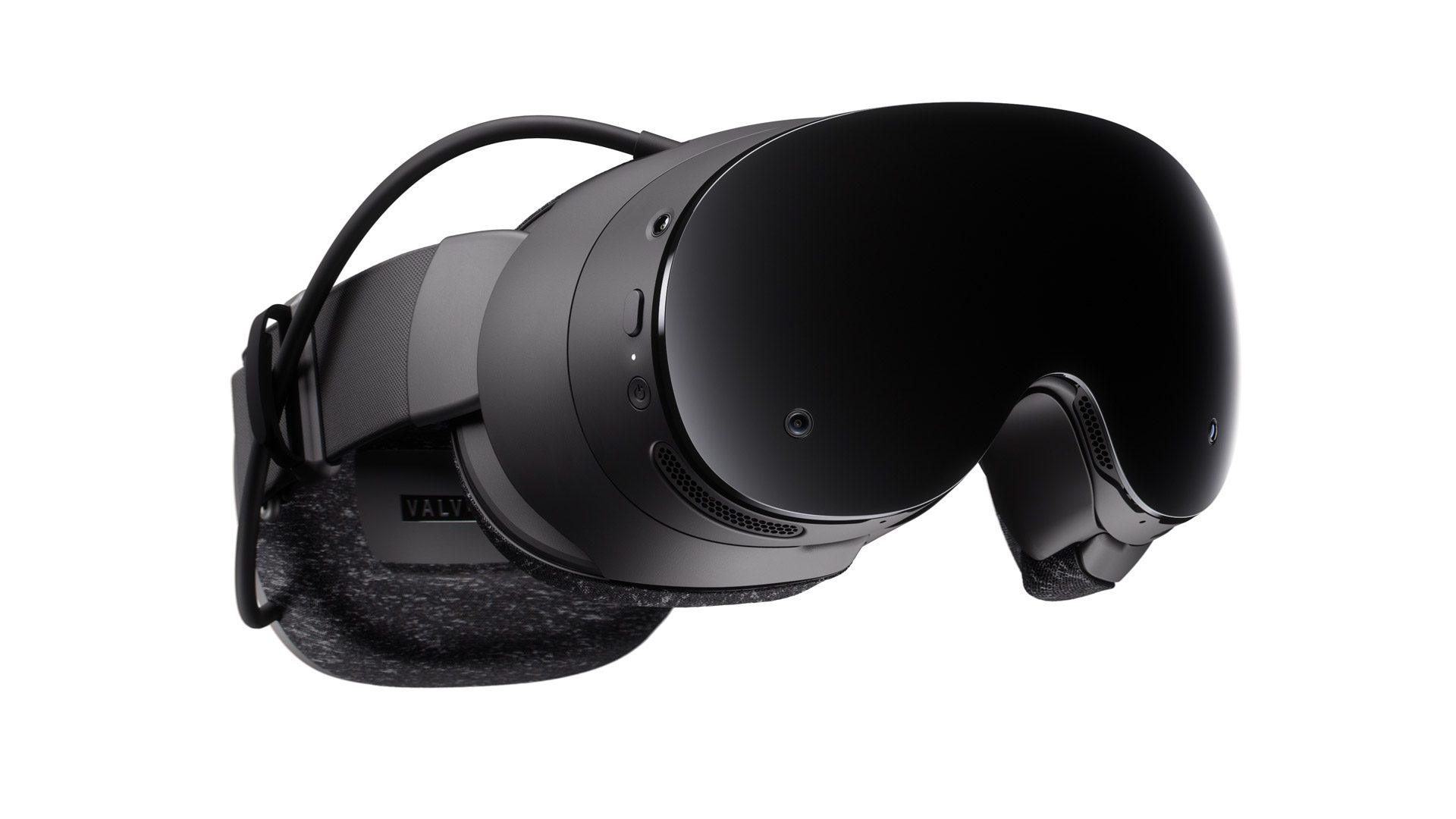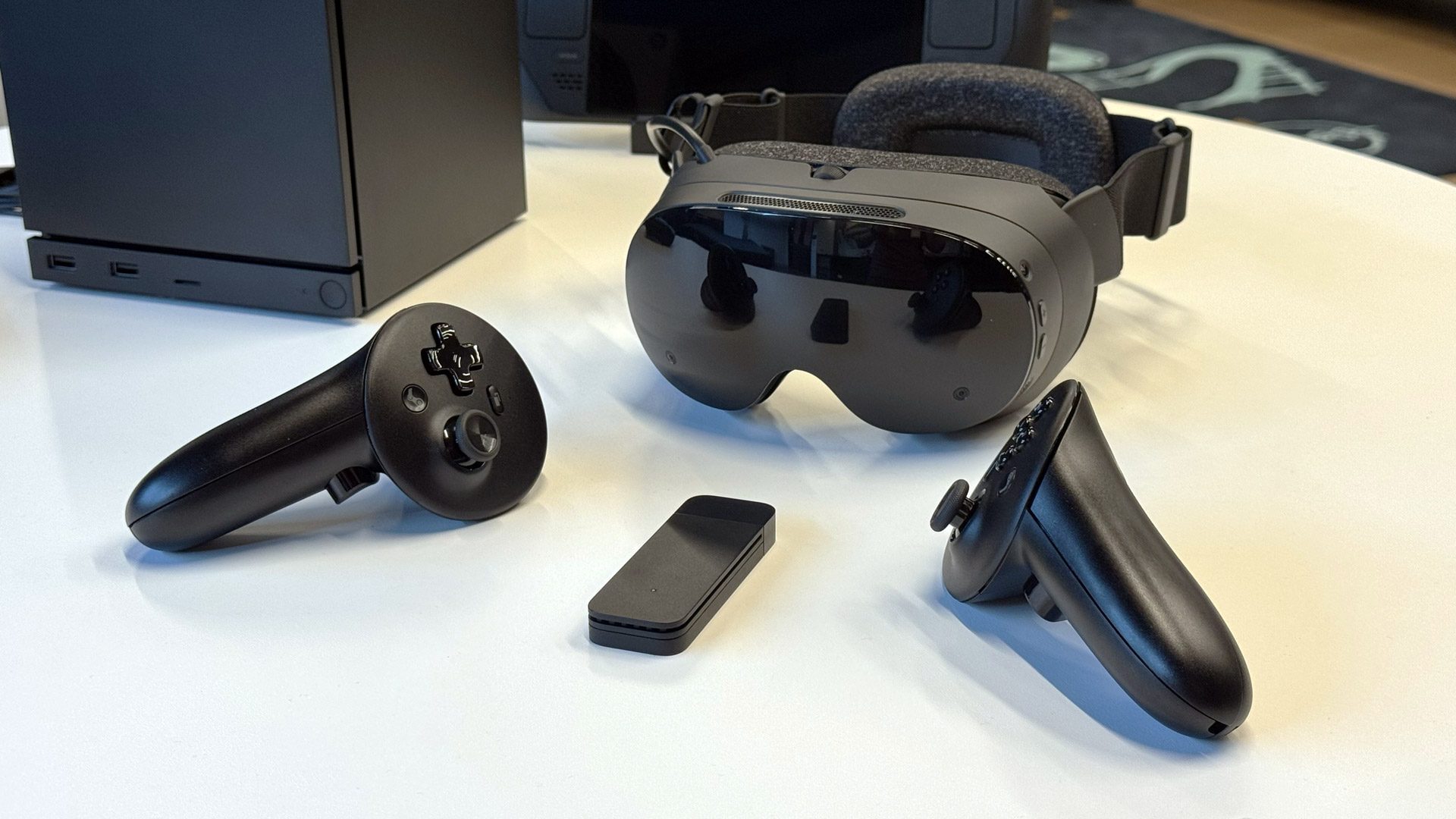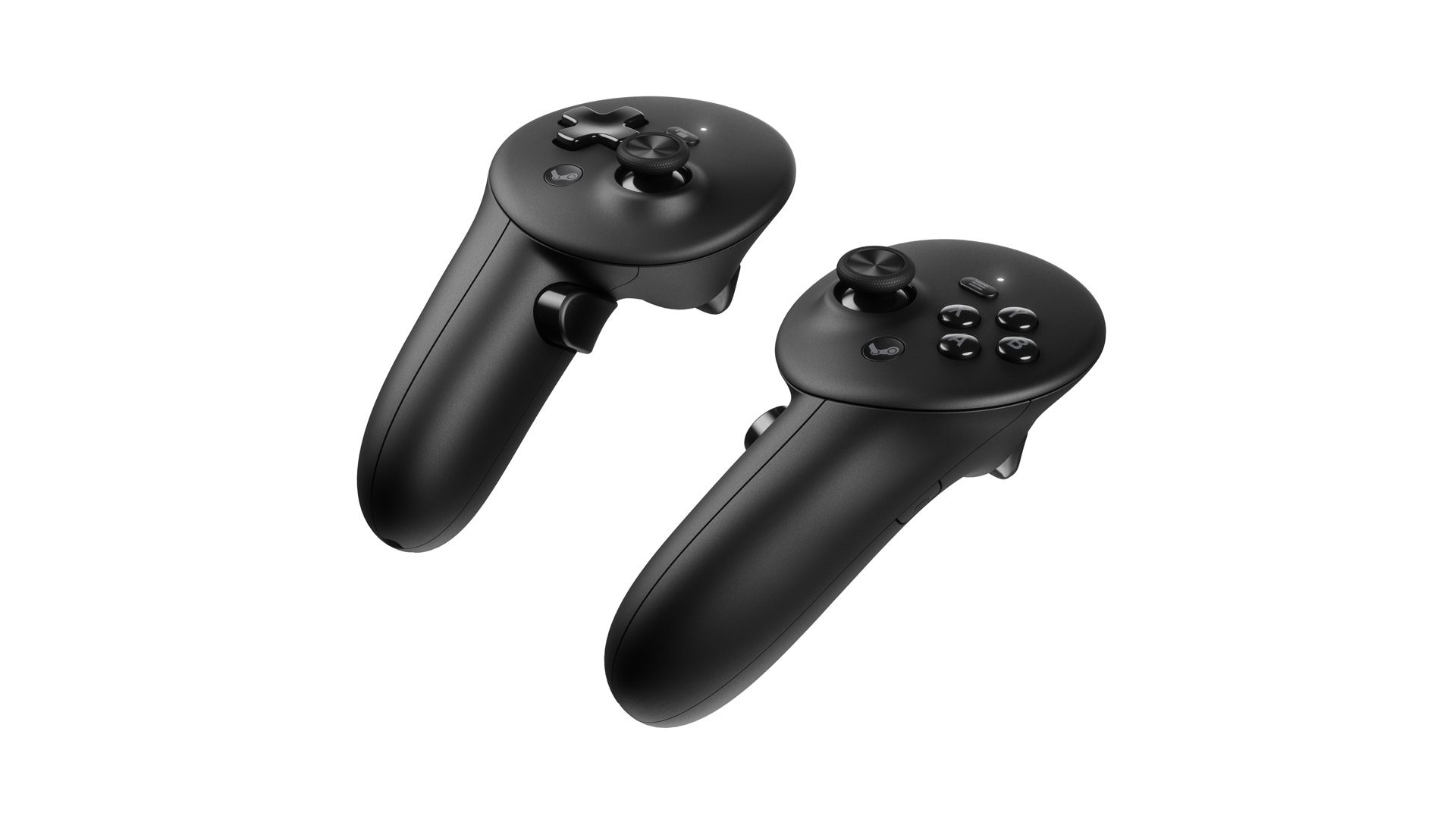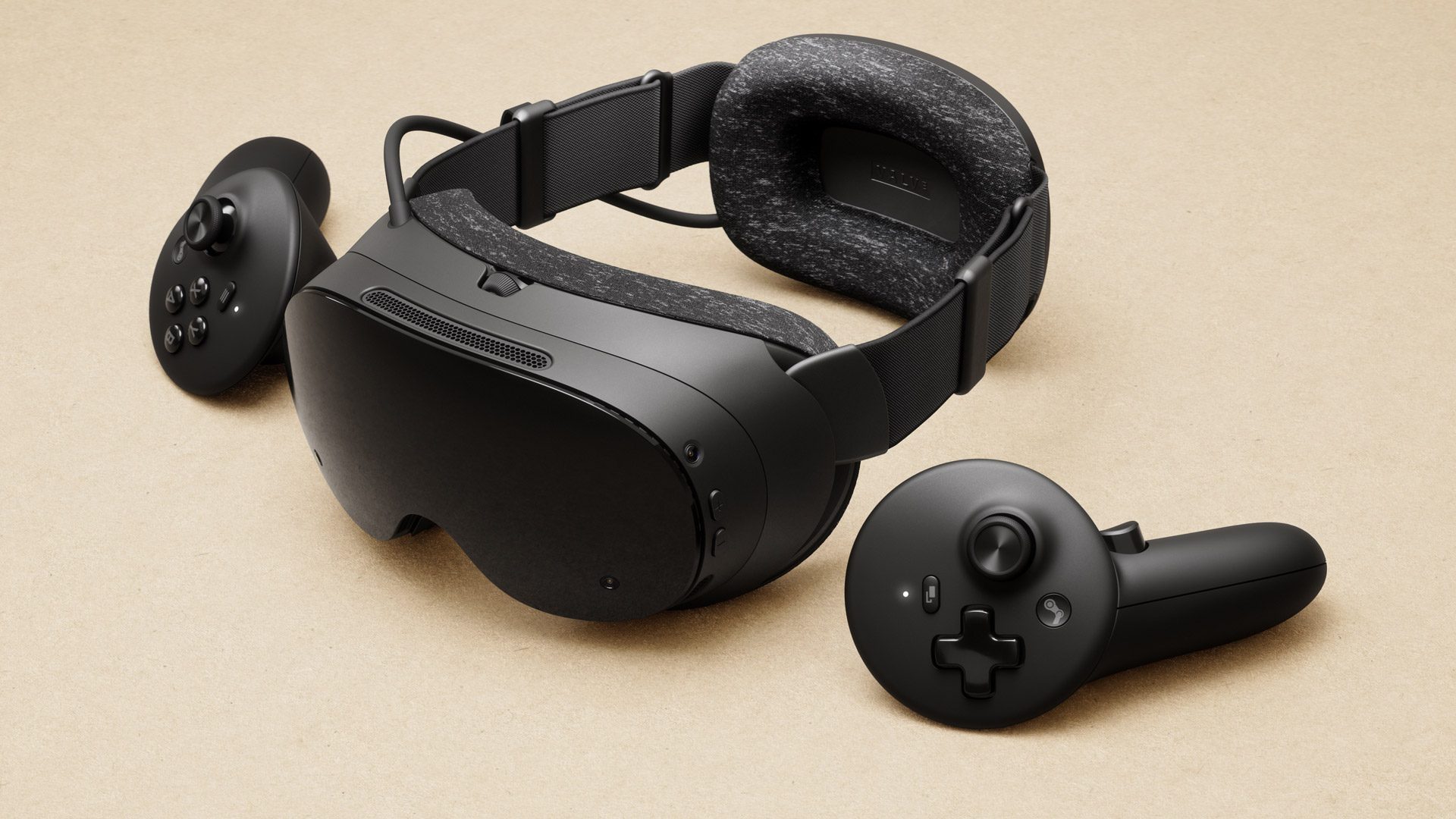Valve has finally unveiled its long-awaited standalone VR headset, Steam Frame (aka ‘Deckard’). While pricing and release date are still pending, the company says we’re due to learn more “in early 2026” following the release of developer kits.
Steam Frame is a compact standalone VR headset running a Qualcomm Snapdragon Series 8 Gen 3 (2023) CPU ARM processor, which natively runs SteamOS, Valve’s Linux-based operating system featured on the Steam Deck handheld.
Like Deck, Frame has wide compatibility to run most Steam content, including flat or PC VR games. That means you’ll be able to run modern flatscreen games, like Hades II (2025), as well as some PC VR games like Ghost Town (2025) directly on the headset itself—provided they’re x86-based, which most are.

Granted, performance will be constrained by the standalone processing power of Frame’s Snapdragon chipset, although it marks the first big step in making PC VR content truly standalone.
The obvious wrinkle right now is that the most demanding PC VR games probably still need developer intervention to be truly compatible, which we’d expect to see with some sort of ‘Frame Compatibility’ badge on Steam like Deck has now, indicating the game (VR or otherwise) is both compatible and runs reasonably well on the headset. More on that below.
Featuring dual 2,160 × 2,160 LCD displays, which offer 72-120Hz refresh (144Hz experimental), Frame boasts a field of view (FOV) of “up to 110 degrees” in addition to eye-tracking, pancake optics, and a rear-mounted battery attached to the headset’s detachable headstrap.

Notably, the display, optics and computing ‘core’ of Frame weighs in at 190g, or 435g in total, which also includes the headstrap, rear-mounted battery, integrated off-ear speakers and facial interface. That ‘battery strap’ comes in the box, although an optional top strap piece will also available for purchase, which the user can add for more stability.
Passthrough is monochrome, which is a bit of sore spot. Still, Frame comes with a user-accessible expansion port than can support two 2.5Gbps cameras via a gen4 PCIe slot, which ought to leave room for hackers to do ever wilder things.
As for content, similar to how Deck has a ‘Proton’ layer, which seamlessly allows most Windows (x86) based games to run on the Linux (x86) based SteamOS, Frame’s Proton layer allows Windows (x86) games to run on its Linux (ARM) version of SteamOS.

That said, Valve says Frame is primarily designed to stream content from a more powerful PC (including the newly announced Steam Machine). To do this, Frame includes a Wi-Fi 6E dongle that creates a direct connection between the PC and the headset for optimal streaming performance. The headset comes with a dual Wi-Fi antenna; 6GHz for streaming through the dongle/PC, and a 5GHz antenna for simultaneously fetching data from your Wi-Fi router.
Additionally, the company has created a foveated streaming technology (similar, but applied broadly to all video streams) which uses the headset’s eye-tracking to dedicate most of the available bandwidth to the image in the center of the user’s vision. Essentially, the user shouldn’t notice when Frame is saving bandwidth, since your fovea is always served up the highest resolution. What else eye-tracking will be used for is still a mystery, as Valve hasn’t indicated anything else beyond foveated streaming.
Battery life figures aren’t tacked down either yet, it seems. Valve says it’s still optimizing battery life of Frame’s 21.6 Wh lithium ion battery for streaming to be as efficient as possible. The company notes that standalone battery life “will be much more variable, depending on the game and its settings.”
Besides the headset and headstrap, in the box is also a pair of motion controllers, which appear to be the very same leaked in November 2024, which feature input parity with traditional gamepads—putting all four action buttons on the right controller, and a directional pad on the left.

The idea is to allow traditional games to work seamlessly out of the box, while VR games may need some minor configuring to put input back at parity with Touch/Index controllers. Controllers include full 6-DOF tracking, capacitive finger sensing, magnetic thumbsticks, haptic feedback, and replaceable AA batteries, which are quoted at a 40-hour life.
As for min-spec, Valve tells Road to VR that if the host PC can run the game performantly, it will be “a good experience streaming to Steam Frame.” That’s well and good for traditional flatscreen games, but at least for PC VR content, you’ll want something pretty beefy. Click here to find out if your PC is VR-ready.
Moreover, Valve says it’s continuing to improve its Frame-flavored Proton layer and SteamOS to maximize compatibility. The ultimate goal is for games to run out of the box without developer work, although Valve will be shipping out developer kits in the meantime so studios can test their games on Steam Frame and provide feedback. That part is crucial for PC VR developers to ensure their games work on Frame, or what sort of optimizations/user settings people need to make, since PC VR gaming is so resource intensive.
And sadly, because Valve is going the dev kit route, that means Frame doesn’t have a price or release date yet. Valve says we’re slated to learn more “in early 2026.” Additionally, the company says it doesn’t have any first-party VR content in the works.
Steam Frame Specs
| Weight | 190g core, 435g (core, headstrap, incl. facial interface, audio, rear battery) |
| Chipset | Snapdragon Series 8 Gen 3 (SM8650), 8 core CPU ARM processor (4nm) |
| RAM | 16GB Unified LPDDR5 RAM |
| Operating System | SteamOS |
| Wi-Fi | Wi-Fi 7, 2×2 – Dual 5Ghz/6Ghz streaming for simultaneous VR and Wi-Fi |
| Storage | 256GB / 1TB UFS storage options |
| Expanded Storage | microSD card slot for extended storage (up to 2TB) |
| Optics | Pancake optics |
| Display | 2,160 × 2,160 LCD (per eye), 72-120Hz refresh rate (144Hz experimental) |
| FOV | up to 110 degrees |
| Tracking | 4x outward facing monochrome cameras for controller & headset tracking |
| Dark Environment Tracking | Outward IR illuminator for dark environments |
| Passthrough | Monochrome camera passthrough (1,280 × 1,024 resolution) |
| Eye-tracking | 2x interior cameras for eye tracking |
| Foveated Streaming | Eye-tracking drives video stream, sending highest resolution to where you’re looking |
| Other | Wireless Adapter included, Wi-Fi 6E (6Ghz) |
| Audio | Dual speaker drivers (per ear), integrated into headstrap |
| Mic | Dual microphone array |
| Port | USB-C |
| Expansion Port | User accessible expansion port – (2x 2.5Gbps camera interface / gen4 PCIe) |
| Battery | 21.6 Wh Li-On Battery |
Steam Frame Controllers
- Full 6-DOF tracking and IMU support
- Capacitive finger sensing
- Magnetic thumbsticks (TMR) for improved precision, responsiveness and reliability
- Haptic feedback
- Input parity with traditional game pad
- Replaceable AA battery (40hr life)
- Optional straps
More Steam Frame Announcement Coverage
Hands-on: Steam Frame Reveals Valve’s Modern Vision for VR and Growing Hardware Ambitions: We go hands-on with Valve’s latest and greatest VR headset yet.
Steam Frame’s Price Hasn’t Been Locked in, But Valve Expects it to be ‘cheaper than Index’: No price or release date yet, but Valve implies Steam Frame will be cheaper than $1,000 for the full Index kit.
Valve Says No New First-party VR Game is in Development: Valve launched Half-Life: Alyx (2020) a few months after releasing Index, but no such luck for first-party content on Steam Frame.
Valve is Open to Bringing SteamOS to Third-party VR Headsets: Steam Frame is the first VR headset to run SteamOS, but it may not be the last.
Valve Plans to Offer Steam Frame Dev Kits to VR Developers: Steam Frame isn’t here yet; Valve says it needs more time with developers first so they can optimize their PC VR games.
Valve Announces SteamOS Console and New Steam Controller, Designed with Steam Frame Headset in Mind: Find out why Valve’s new SteamOS-running Console and controller will work seamlessly with Steam Frame.
Steam Frame vs. Quest 3 Specs: Better Streaming, Power & Hackability: Quest 3 can do a lot, but can it go toe-to-toe with Steam Frame?
Steam Frame vs. Valve Index Specs: Wireless VR Gameplay That’s Generations Ahead : Valve Index used to be the go-to PC VR headset, but the times have changed.
,
